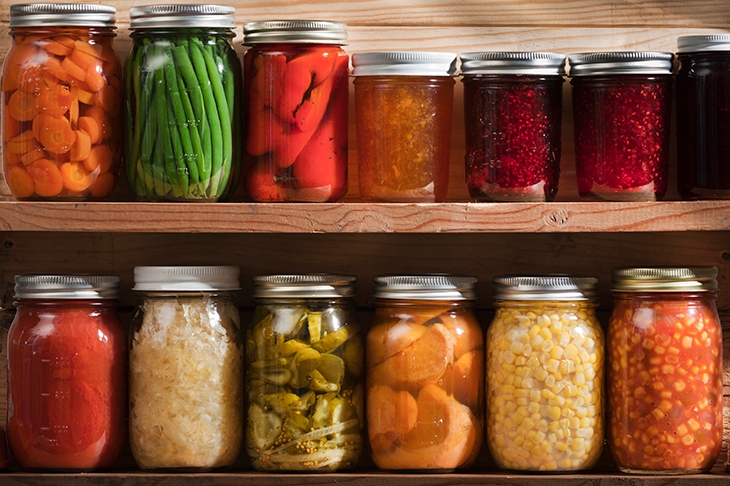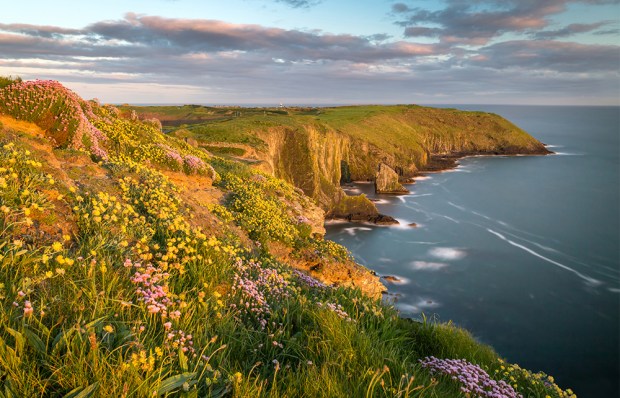We have beans, peas, potatoes, tomatoes, butternut squash, plums and strawberries growing in our garden.
I dug up and replanted half the flower beds with food when lockdown started, during a moment of panic about where all this was going.
We also began a store of tinned goods in the cellar. Don’t all shout at once. I didn’t panic buy, and I didn’t waste a morsel. I shopped very frugally at first and only bought what we needed.
But once the shelves started stocking up I began a modest doomsday store consisting of tins of sweetcorn, soup, ravioli, ham and sardines, along with jars of passata, frankfurters and gherkins. Why do we buy giant gherkins at times of crisis? I think it must be something to do with the homesteading spirit that lies dormant in all of us.
I was a big fan of Laura Ingalls Wilder when I was a child, and read all the books in the Little House on the Prairieseries. I have it in my head that when Pa was busy chopping wood, Ma would pickle and preserve vegetables for the winter months. So I planted up the garden with fruit and veg, hoping I might have enough left at the end of summer to start some pickling of my own.
Necessity being the mother of all invention, I have been seeing all sorts of possibilities. I discovered we already have a plum tree, which I grew from a tiny sapling no bigger than a twig that my mother gave to me as a cutting from her tree to plant at the cottage when we moved in three years ago.
I never noticed before, but now I realise this magnificent russet-coloured tree is absolutely heaving with small red fruits that are delicious in jams and pies, according to my mother. She informs me I ate many a pudding made from them when I was little.
My mother had a wonderful vegetable garden in a dedicated plot next to the summer house. My veg is squeezed between hydrangeas and rose bushes. They call this companion planting. I have used every scrap of earth but it seems to work.
The climbing beans are delicious, better than anything I have tasted from a shop. Even the builder boyfriend consented to eat a small portion when I put them on his plate of chicken Kievs, and normally he throws a tantrum if I make him eat anything green.
The peas are bursting with flavour but extremely few and far between. The slugs and the flies help themselves no matter what I do. I’ve deployed a great deal of clear plastic, bean poles and chicken wire. I’ve balanced barbecue grills and drain covers over the beds. I’ve fought a series of pitched battles with pests armed only with a giant shaker of salt.
But the critters always seem to get the better of me and eat half of what I’ve grown before I can harvest it.
‘This is why farmers spray everything with chemicals,’ declared the BB as he helped me peg more plastic sheeting around my ravaged butternut squashes.
‘It’s why organic only means they spray everything with nicotine. And you tell the vegans to try and grow stuff without animal manure. They may not want to eat animals but they’re happy enough to eat animal sh…’ Yes, well, you get the picture.
He has a theory that if the armchair eco-warriors had to produce their own food they would come swiftly to more realistic conclusions. As it is, the chattering quinoa-guzzlers know so little that I suppose we must be thankful that the only thing they have to do with food is to condemn it before eating it.
A farmer friend was accosted the other day by ramblers who screamed at him not to dare spray the fields they like to trespass across, on the basis that all chemicals are poisonous.
Trying to educate them would have taken too long, so he told them to get off his land. And people wonder why farmers say that.
Here in the village, it has been ‘ragwort fortnight’. Notices have been put up by the parish council asking walkers to ‘pull a dozen stems of ragwort per visit’ from the meadow at the back of the green, which is a sea of yellow, adding that you might want to wear gloves.
There is something very pagan about this. It is utterly pointless, so I wonder whether they enjoy the ritual.
The twisted piles of pulled ragwort, like grotesque corn dollies, are drying in the blazing sun, becoming more palatable and therefore more toxic to animals, while the sea of yellow flourishes unperturbed.
The council told me they don’t want to spray the meadow and eradicate the ragwort because it is a habitat for moths. Naturally.
Got something to add? Join the discussion and comment below.
Get 10 issues for just $10
Subscribe to The Spectator Australia today for the next 10 magazine issues, plus full online access, for just $10.
You might disagree with half of it, but you’ll enjoy reading all of it. Try your first month for free, then just $2 a week for the remainder of your first year.















Comments
Don't miss out
Join the conversation with other Spectator Australia readers. Subscribe to leave a comment.
SUBSCRIBEAlready a subscriber? Log in